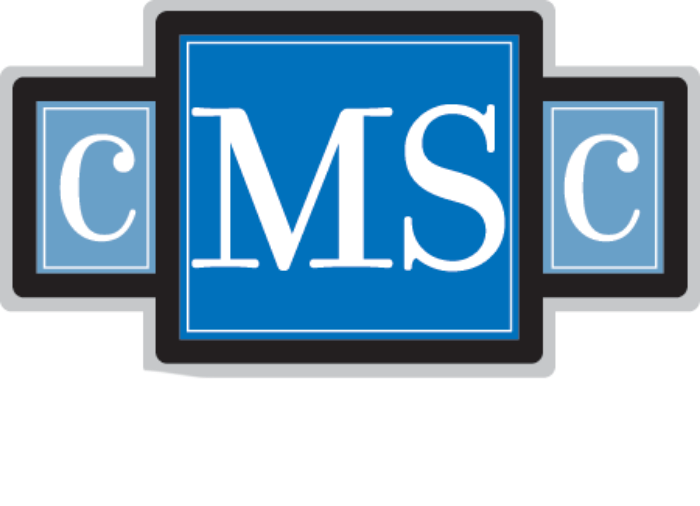Practice Points
- Nonpharmacologic interventions such as music therapy, alone or in combination with physical therapy, may alleviate symptoms in people with multiple sclerosis (MS) with few or no adverse events.
- These interdisciplinary rehabilitation approaches should be introduced earlier in the treatment of people with MS to prevent loss of function rather than at a later stage in the disease course, when patients have already developed some level of disability.
- Virtual appointments enable people with MS to have access to expert advice and services in the comfort of their homes, resulting in an optimal balance with in-person appointments for ongoing patient care.
Multiple sclerosis (MS) is a progressive disease involving demyelination of the central nervous system. It is estimated to affect more than 2 million people worldwide1 and may affect up to 1 million people in the United States.2 As the disease progresses, people with MS may experience worsening of symptoms, including, but not limited to, problems with mobility, balance, spasticity, fatigue, and cognition.1,3 Many also develop psychosocial comorbidities such as depression, anxiety, social isolation, and suicidal ideation; the lifetime prevalence of developing depression is 50% for individuals with MS.4
This article reviews the role of music therapy (MT), a valuable but underappreciated nonpharmacologic rehabilitation therapy for MS, and how MT can support the treatment goals of physical therapy (PT), a more widely used and better reimbursed rehabilitation therapy, leading to improvements in most of the physical and psychosocial domains that are negatively affected in individuals with MS.5,6 Reimbursement for supportive therapies and the value of telehealth solutions for people with MS are covered as well.
Unmet Need for Interdisciplinary Therapies in MS
Phenotypes of MS are categorized by patterns of progression and remission as evidenced by disability progression or inflammatory activities such as magnetic resonance imaging changes or clinical relapses.7 Symptoms can manifest in a relapsing-remitting manner or can occur and get progressively worse with no periods of remission.7,8 Approximately 85% of people with MS are diagnosed as having relapsing-remitting MS (RRMS),1 characterized by intermittent relapses with complete or near-complete recovery.8 Over time, patients are likely to transition to secondary progressive MS (SPMS), characterized by a progressive increase in disability with or without relapses and other inflammatory activities.8 This progression also corresponds with increased brain atrophy.9 If untreated, most patients with RRMS will transition to SPMS within 25 years of disease onset.10
Approximately 15% of people with MS have primary progressive MS, where MS symptoms progressively worsen from onset, with no periods of remission.1,8 Secondary or primary progressive disease is further defined as progression with or without disease activity, which is characterized by progression of symptoms with or without worsening of disease activity as seen by magnetic resonance imaging or clinical activities, such as relapses.7 A higher proportion of patients with SPMS than with RRMS report impairments and difficulties in physical domains (eg, walking, gait and balance, muscle spasm, bladder dysfunction), cognitive domains (eg, attention and processing speed, executive function, memory), and other domains (eg, fatigue, numbness).11,12 Also, SPMS has a greater negative effect on patients’ working and everyday activities than does RRMS.11
Disease progression is associated with increasing disability and is historically quantified in MS by the Expanded Disability Status Scale (EDSS) (Figure 1). The EDSS score ranges from 0 (no disability) to 10 (death due to MS) and is based on 8 functional systems with an emphasis on ambulation.13
Although disease-modifying therapies (DMTs) are available for MS to delay disability progression and reduce relapses (Figure 2), as the disease progresses, symptomatic treatment becomes increasingly important, particularly for SPMS and primary progressive MS. An interdisciplinary approach is required to ensure that people with MS receive supportive therapy for the entire range of symptoms they experience. Indeed, 33% to 80% of patients with MS seek complementary and alternative therapies as part of their care.14 Supportive therapies may include PT, occupational therapy, social services, psychological therapies, speech and language therapy, dietetics, MT, and other creative arts therapies.
Can MT Support PT Goals in MS Rehabilitation?
Among supportive therapies, PT is likely the most widely used rehabilitation therapy,15 and it is important for people with MS of all levels of function. It encompasses the use of physical methods, such as exercise and neurofacilitation, to improve or maintain patients’ movement, strength, endurance, and flexibility. Physical therapists can also help patients develop compensatory strategies to improve their physical function and health-related quality of life (HRQOL). Interventions for PT include safe, functional exercise programs, specialized training with assistive aids, and prevention of secondary complications caused by decreased mobility.
The intended outcome of PT will change depending on a person’s functional abilities.16 At diagnosis, PT generally focuses on keeping patients active and providing wellness strategies. During or after a relapse, PT tends to focus on helping patients improve or regain affected motor functions. With disease progression, PT may emphasize teaching patients and their support partners how to use adaptive equipment safely while maintaining physical activity to reduce secondary complications.16 Patients are often referred to PT only after they have developed a specific physical problem owing to relapse or another issue or have worsening symptoms; however, early intervention to enhance mobility may help slow the loss of motor skills.17
Another form of rehabilitation is MT; MT is a creative arts therapy, a division of therapies that includes MT, art therapy, dance and movement therapy, and drama therapy. There are 4 main categories of methods used in MT: (1) improvisational, (2) recreative or performing, (3) compositional, and (4) receptive.18 The first 3 are active forms of MT, involving the patient playing or singing in dialogue with the therapist or songwriting. In receptive MT, the patient listens to music and may respond silently or verbally.18 The method of intervention used is guided by patient-centered goals to meet active health needs.
Music therapy can help improve a wide range of functional and psychosocial domains because listening to or performing music integrates functioning across multiple neurologic domains, including cognition, motor, emotion, language, auditory, and multisensory functions.19,20 The neurobiological and psychological mechanisms regulating these effects are expected to share neural systems for learning, reward, and arousal and to affect regulation and activity-driven plasticity.21 Evidence suggests that the neural mechanisms underlying pain, including concurrent activity of the anterior cingulate cortext, insula, and somatosensory areas, overlap with areas consistently modulated by music. Mechanisms through which music could alleviate pain also include its impact on the mesolimbic system, cortical and limbic/paralimbic brain structures involved in the affective and cognitive modulation of pain, and the hypothalamic-pituitary-adrenal axis.19 Thus, MT may complement PT or have a synergistic effect, including in pain management.
However, despite its numerous benefits, MT is often overlooked as a supportive therapy, and many clinicians do not consider it as part of a comprehensive rehabilitation program. Because it targets multiple functions, MT can be a useful intervention for people with MS across the entire spectrum of disability in MS (EDSS scores of 1.5–9.0).5,22 Music therapy can improve physical symptoms, such as mobility, gait, and fatigue, and HRQOL, particularly through music-based therapy for movement disorders, and, as such, may be of particular interest to support the PT treatment goals for people with MS who are able to be physically active (EDSS scores of 1.5–4.5). Some MT activities, such as playing a keyboard, can also target and improve fine motor skills in the hands and upper limbs.6,23
In a systematic review of clinical trial data from 2005 to 2020, Lopes and Keppers24 highlight the effectiveness of music-based interventions in improving motor skills, including enhanced motor recovery in gait, upper limb function, paresis, and balance, and cognitive functions in people with MS. They note that all studies yielded positive results for assessed motor and nonmotor outcomes and that music interventions were mostly superior to conventional therapy or no intervention. However, although satisfactory rehabilitation results have been documented with music-based therapies in many patients with other neurologic diseases, including stroke, Parkinson disease, and dementia, systematic evidence with good methodological standards and specific outcomes relating to MS rehabilitation are still lacking.24
Importance of an Interdisciplinary Approach for Patients at the Lower End of the Disability Spectrum
An interdisciplinary approach is fundamental to achieving optimal results in MS treatment and rehabilitation. Emerging evidence supports a favorable role for MT in providing motivation to achieve physical goals for patients at the lower end of the disability spectrum. For example, entrainment—the use of rhythm-based training to improve gait and mobility—can successfully combine MT with PT to help people with MS.
In a pilot study assessing the effect of rhythmic auditory stimulation on gait performance, people with MS with gait disturbances who walked 20 minutes daily for 4 weeks to songs with a tempo 10% faster than their spontaneous walking cadence had a statistically significant decrease in double support time (the sum of the time that both feet are touching the ground during the gait cycle) compared with people with MS who received rhythmic auditory stimulation while walking for 2 weeks (left: P = .0176; right: P = .0247).25 Significant improvements were also recorded for other gait parameters, including cadence, velocity, stride length, and step length.25
More recent feasibility studies have noted similar improvements in motor outcomes through integration of gait training and music or entrainment. Maggio et al26 found that people with SPMS who completed 30 minutes of treadmill training combined with rhythmic auditory stimulation 3 times a week for 8 weeks showed significant improvement in static and dynamic balance, walking speed, and mobility, as well as in mood and perceived quality of life compared with people with MS who received conventional overground gait training for the same amount of time. In a study similar to the previously mentioned pilot study, people with MS with motor and cognitive impairments were able to walk at higher tempi than their preferred walking cadence when walking to music or metronomes, with higher synchronizations being obtained for metronomes compared with music.27 Participants also had lower perceived fatigue when walking with music.27
Interdisciplinary rehabilitation programs can provide short- and long-term gains for both patients and their care partners by improving patients’ ability to participate in normal life activities such as work and social events, which may potentially improve HRQOL.28
However, patients are often referred to PT, MT, and other interdisciplinary therapies only after their disease has progressed to the point of significant disability. As seen with DMT trials, earlier intervention with PT, MT, or both may potentially lessen the functional decline of patients through adaptive neuroplasticity29 and identify useful functional and emotional coping strategies, meaning that the patient may retain independence longer.
More than 50% of people living with MS take more than 5 medications to modify the disease and manage symptoms.30 Delaying functional decline and lessening the severity of symptoms with supportive therapies such as PT and MT, individually or in combination, may reduce the need for polypharmacy to manage MS symptoms, including fatigue, depression, and anxiety, decreasing adverse effects resulting from polypharmacy and potential drug-drug interactions that, in turn, necessitate additional medications to manage the symptoms. Thus, PT and MT may reduce long-term MS-associated health care costs in nursing home residents, possibly in part owing to a reduction in polypharmacy.31
Role of MT for Emotional Support at the Higher End of the Disability Spectrum
For people with MS at the higher end of the disability spectrum, who are less able to engage in physical activity, MT offers a forum for exploring emotional responses to the physical changes experienced as MS progresses and may lead to improved levels of self-esteem, depression, and anxiety.32 In many health systems, mental health resources are scarce, and the task of increasing awareness and access to screening for mood disorders in people with MS often lies with patient advocacy groups.33,34 Although MT is not a replacement for psychological therapies, such as cognitive behavioral therapy, it may be a useful adjunct for those with limited access to these treatments or those with limited verbal abilities, for whom “talking therapies” are less well suited, although access to MT may come with its own difficulties, as discussed in the next section.
Music therapy can also improve learning and memory in people with MS. In a study of 54 individuals with RRMS, patients listened to 15 spoken or sung words. They were asked to recall the words immediately after the recording and again 20 minutes later. The percentage of words recalled correctly was higher in those who listened to the sung words at both time points: 77.0% vs 64.7% and 76.6% vs 59.8% (2-way analysis of variance: P = .45), respectively.35
As with PT, patients should be referred to a credentialed music therapist with specific experience in treating patients with neurologic conditions (https://www.musictherapy.org). At the start of a course of MT, clear and measurable goals should be set to monitor progress.36 Referral for MT should be considered for early intervention to offer strategies that maintain gait and fine motor function. However, rehabilitative interventions at later stages of the disease can still be beneficial to patients because they can target patients’ psychosocial needs.
Issues With Reimbursement
Insurance and funding are significant issues in health care in the United States, and they often create barriers to accessing PT, MT, and other supportive therapies. Often, MT is funded through philanthropic programs or hospital operating budgets; therefore, availability across different regions is uneven. Although reimbursement for MT by state and private insurances does occasionally occur, it is state-specific and there is no consistent national reimbursement model.37 Medical insurers need to be made aware of the health benefits of MT to consider reimbursement, which could ultimately result in reduced overall health care costs. The cost-effectiveness of MT could be demonstrated by studies into health economics and outcomes research, which might provide data on clinically meaningful health benefits such as reducing falls that lead to hospitalizations and delaying the use of walking aids. In addition to health care services, there are also community-based organizations that offer supportive therapies to members. A list of existing sources of PT and MT for MS is presented in Table S1, available at the end of this article.
Owing to the current insurance environment and regulations in the United States, PT is often limited or not approved for people with MS who are not demonstrating what insurance companies define as progress,37 such as walking faster or being more independent in activities of daily living. Unfortunately, insurance’s definition of progress is usually not based on a progressive disease model, although maintenance of physical function over time is a significant achievement in a progressive disease such as MS. In other countries' health care systems, it is easier for people with MS to access PT. In the United Kingdom, a survey of nearly 1300 people with MS found that 87% had used PT services.38 In Australia, PT is offered as part of the National Disability Insurance Scheme, so it is free for people with MS who meet the disability requirements.39 In Europe, on average, 76% to 91% of the costs of PT for people with MS are covered by the state health care system.40
Telehealth and Telerehabilitation
Long-term rehabilitation is a fundamental component of continual care for people with MS. Continued access to comprehensive rehabilitation services remains a significant challenge.41 Telerehabilitation is the virtual delivery of rehabilitation services using information and communication technologies.42 Despite the general advances in this promising technology, reports on the effectiveness of telerehabilitation for people with MS remain limited. The COVID-19 pandemic and the associated need for immediate infection control transformed global health care and has promoted the rapid implementation of virtual health care solutions. However, clinical practice has been hastened by necessity, and research is lacking on telehealth-related patient outcomes that will inform evidence-based guidelines and support best practice recommendations.
In practice, there is often a gap between clinical practice recommendations and available health care provision.43,44 Increasing numbers of patients have access to the internet, and, therefore, telerehabilitation may provide a feasible alternative to conventional in-person therapy.43 By using telerehabilitation services, consultations can take place from the comfort of patients’ own homes43 rather than at medical centers. Access and adherence to in-person services at hospitals and specialized clinics are limited by many factors, including regional availability, time constraints, mobility limitations, transportation difficulties, health insurance coverage, and financial burden.43,44–47 Telerehabilitation may provide an effective mechanism for delivering evidence-based therapy while reducing health care costs, social stigma, and patients’ anxiety.43,44,48 Thus, it may allow for more comprehensive health care and may reduce health disparities when distance, disability, or cost make travel to a health care facility a barrier, particularly in rural, low-income areas.43,44,46,47 For some people with MS, it may be a choice between telerehabilitation or no therapy at all.44 Furthermore, telerehabilitation allows some people with MS to receive care from MS specialists, whose services they would not be able to access in person.
Patients using telerehabilitation programs have reported positive experiences,42–44,46,47,49 and some make significant progress.45–47,49 Many of these patients find comfort receiving therapy in their own homes because they are in familiar surroundings and may feel more confident when trying new techniques and experiences.43,47 Telerehabilitation has the advantage of reducing the fatigue that many people with MS experience when they travel a long distance to attend in-person therapy sessions. This is an important factor because fatigue and neuromuscular fatigue are common adverse effects that limit performance. A limited number of small pilot studies have shown that home-based PT delivered virtually can improve functional mobility, including walking distance, with a similar efficacy to conventional in-person PT.45,49,50 Participants in these studies were highly satisfied with the telerehabilitation programs, and so far no adverse events have been identified.45,49,50
There are, however, several factors to consider when offering telehealth solutions. Technological and practical problems can pose a major obstacle to delivering a successful telehealth session. Even when the newest technology is used, there may be issues with connectivity, speed, and reliability, especially when patients are new to the technology or live in rural areas where access to a high-speed internet connection is variable.43,44,47,48 Socioeconomic factors may be a decisive barrier; patients with low income may lack the equipment, wireless connection, or bandwidth to engage successfully in telehealth. Tailored technical support may help to overcome some of these challenges.44
Privacy is a significant ethical concern for telehealth. Conducting virtual therapy sessions in a person’s home does not afford the same privacy as an in-office visit and may be prone to interruption by family members, friends, or housemates. Software used for telehealth sessions should be compliant with the Health Insurance Portability and Accountability Act of 1996 (HIPAA) Privacy and Security Rules to not put health information at risk.51 Providers often have the added challenge of adhering to rapidly changing local and national telehealth guidelines, including serving only patients who live in their licensed geographic area and complying with the applicable local guidelines, as well as their own licensure.44
Telerehabilitation is limited by the inability to perform "hands-on" activities. In PT, for example, gait training requires the use of various types of equipment as well as hands-on facilitation by the therapist. For MT, there are similar limitations. Telehealth may limit the possibility of effectively engaging the patient in techniques, whereas during an in-person visit a therapist can actively monitor and guide the patient’s progress. Even with a good internet connection, music therapists are likely to miss some of the visual and auditory information they would receive at in-person sessions.43,44,48 Auditory delay is especially problematic for live music, and this is an essential feature of MT, although it can be partly compensated for by using structured music intervention techniques, such as staggering and repetitions.48 In these situations, a more structured turn-taking would be necessary to eliminate interruptions; however, it may also be useful in streamlining the conversation and encouraging clarity and succinctness.48 As a result, technological challenges may guide the therapy rather than the needs of the patient.
Anxiety, depression, and other psychological symptoms are clinical manifestations that people with MS may experience every day,52 and for many patients these symptoms have been exacerbated during the COVID-19 pandemic. Preliminary evidence links poorer mental health outcomes, including symptoms of anxiety, depression, and stress, to extended periods of social isolation during the pandemic.53 Music can act as a surrogate when direct social interaction is not possible,54 potentially alleviating negative mental health outcomes. As dynamic modes of therapy, MT and PT have the ability to address the motivational,55 emotional,56 cultural,57 and social needs of an individual, and thus to foster greater patient participation, engagement, and collaboration, and to help support patient adherence.58
Future Perspectives
Future interdisciplinary therapies for MS are likely to incorporate digital and technological advancements, potentially affecting PT and MT performance and accessibility. For example, video games or specially designed training equipment may help patients continue exercising at home.59,60 A list of virtual exercise providers is available in Table S1.
Similar tools for MT are currently under development. Wearable sensor technology can be used in combination with an app and may help patients undertake personalized gait training by themselves.61 Virtual reality and artificial intelligence are being studied as interventions and may be effective ways to deliver neurorehabilitation to people with MS.62 Telehealth-based music and mindfulness programs, such as the music therapy program at A Place to Be,63 may help reduce stress, decrease feelings of depression, and improve HRQOL in people with MS.
Given the availability of DMTs and the focus of drug development to slow progression or cure MS, nonpharmacologic health care services are often underused by people with MS, perhaps due to a lack of patient and provider awareness and a lack of financial support.64 Health apps on smartphones can improve outcomes and self-management and increase patients’ access to care, disease information, and support.64 For example, the elevateMS app helps people with MS track their health by logging their symptoms daily and performing simple tasks to gauge disease progression.65 Researchers also have access to the app’s patient data, which they can use to generate new insights into how MS symptoms fluctuate daily through devices such as “Mabu.”
Conclusions
Multiple sclerosis is a progressive and, so far, incurable disease. Although pharmacotherapies act on the inflammatory component of the disease as well as reduce disease progression, additional interdisciplinary therapies are an important adjunct for managing daily life with MS, particularly in improving or maintaining mobility, cognition, and other functional systems. The addition of PT and MT as interdisciplinary treatments delays the progression and/or worsening of symptoms, and thus reduces or delays polypharmacy. Systematic studies have found that MT provides rehabilitation benefits in patients with neurologic diseases, and there is emerging evidence that it yields functional and psychosocial benefits for people with MS as well. Today, telehealth solutions enable people with MS to access MT provided by experts in the comfort of their own homes, resulting in an optimal balance with in-person appointments for ongoing patient care. Current views and evidence regarding the combined use of PT and MT in MS, including via telerehabilitation, indicate that these highly beneficial cost-effective tools delay the loss of both fine and gross motor skills, improving overall well-being and psychosocial health factors and, ultimately, preserving HRQOL. Additional research into the combined use of PT and MT for MS rehabilitation is warranted to provide systematic evidence for the added benefit that MT can have in improving PT’s motor and nonmotor treatment goals. There is an urgent need for clinicians to gain more knowledge about MT and consider the value that the combined use of MT and PT can have in improving physical as well as psychological and emotional symptoms. In addition, reimbursement models need to be improved to provide patients with better access to these therapies.










